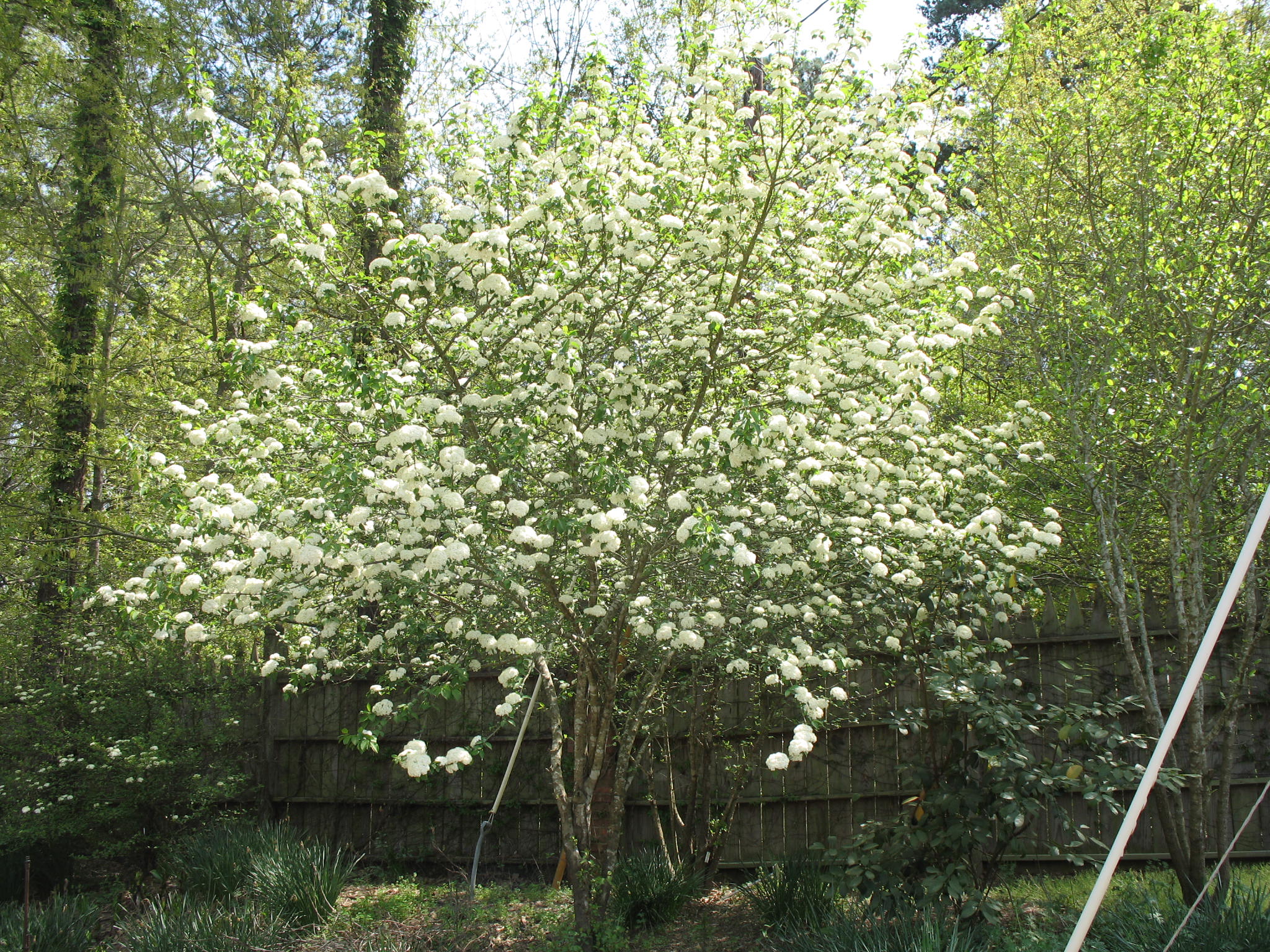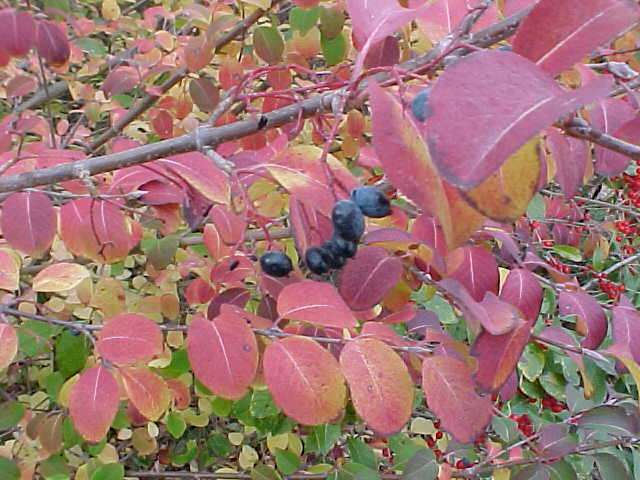Politics and economics to the back burner. I need to shift focus to things that don’t raise my blood pressure and/or depress me. With that as a segue…
Spring is less than a month away. Seed catalogs have arrived and nurseries are starting to release their ‘plant availability’ lists. It’s time to think about spring landscaping projects.
There’s a spot in the yard where I think Viburnum prunifolium (blackhaw viburnum) could make a nice hedge. I want to try one out behind the old shed before committing to a whole hedge though – see how it grows, how it looks, etc.
For the benefit of those not familiar, a couple pictures found by Googling “viburnum prunifolium”:
Fruit and fall foliage:
I’d like to plant one this spring. The issue is finding a source. So far the only retail source I can find which has them listed as stock items is Northeast Nursery in Peabody. (I’ve never been to Northeast Nursery. I learned of them because they’re one of the sources the town DPW buys trees from.) I have an email out to them re availability. (Experience tells me just because it’s listed as available doesn’t mean the nursery actually has it. Always call ahead to confirm.) If they’ll have them in April or May then I’ll take a drive up to Peabody. They say they’ll have a “limited supply” come April and that I should call to check stock then. They say that they have six and that I can stop by at my convenience. (Note: Excellent!)
Tripple Brook Farm also lists V. prunifolium on their website. If they have it then Plan B will be to get it from them via mail order. Tripple Brook has a nice selection of native plants – got some nice Kalmia angustifolia from them last year – but its a bit of a haul to get there so better to do mail order if its just a couple of small things. (Tripple Brook tells me that they also have it in stock – some large specimens as well as small ones. The large plants are too big to be shipped though and working the logistics of a nursery visit is probably not feasible. I think small plants from Tripple Brook are the fallback if Northeast Nursery’s stock doesn’t look good or if they run out.)
Some shrub trivia: Apparently the common name “blackhaw” came about because V. prunifolium resembles a Washington Hawthorn. (I haven’t seen a Washington Hawthorn but, judging from the pictures, that seems a fair comparison.) “Black” refers to the color of old bark on V. prunifolium and “haw” refers to its Hawthorn-like appearance.
-
Zone: 3 to 9
-
Native Range: Eastern and central North America
-
Height: 12 to 15 feet
- Spread: 6 to 12 feet
- Bloom Time: May to June
- Bloom Color: White
- Bloom Description: White
- Sun: Full sun to part shade
- Water: Dry to medium
- Maintenance: Low
From Dirr’s Hardy Trees and Shrubs:
A great native species that has been described … as a “puritan with a rigidity of character similar to some of the hawthorns.” … The 1-1/2 to 3-1/2 in.-long, dark green leaves change to bronze, dull deep red, and shining red in fall. White flowers occur in 2- to 4-in.-diameter, flat-topped cymes in May. The fruit are quite similar to those of Viburnum lentago [nannyberry viburnum]… Very adaptable. Much like V. lentago, but this species is preferable because of its mildew resistance and superior foliage.
I can’t claim to be incredibly familiar with either but my recollection is that V. prunifolium and V. lentago are both nice plants. (They certainly look nice in pictures!) The sources I’ve read indicate that they’re similar in pretty much all respects except mildew resistance. It’s the mildew resistance which leads me to prefer V. lentago for our yard. I’ll post on V. lentago later this week.


